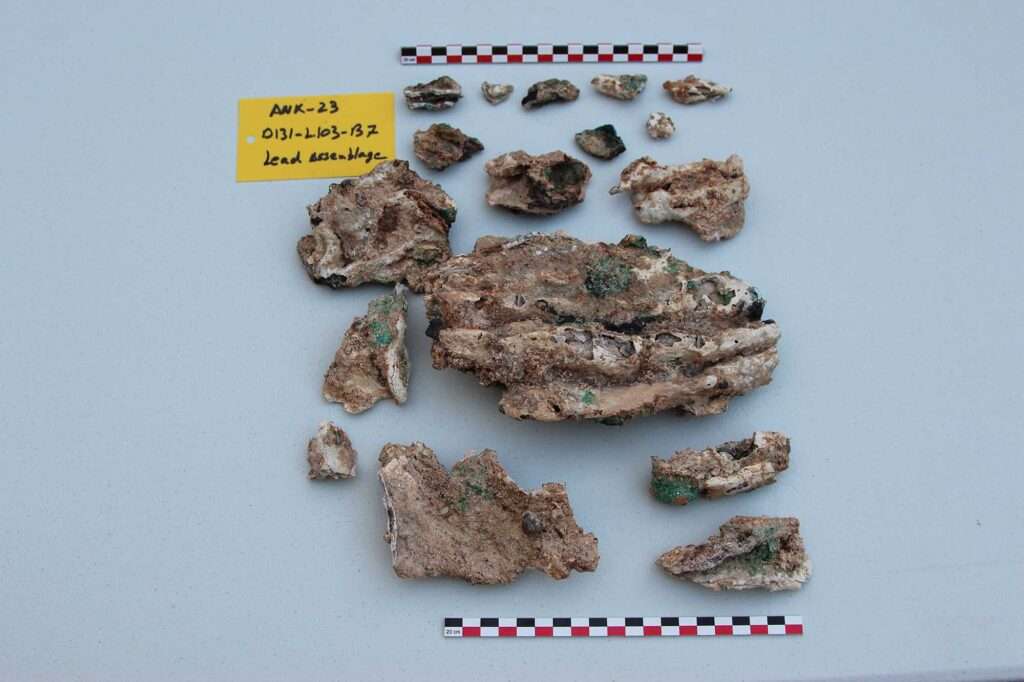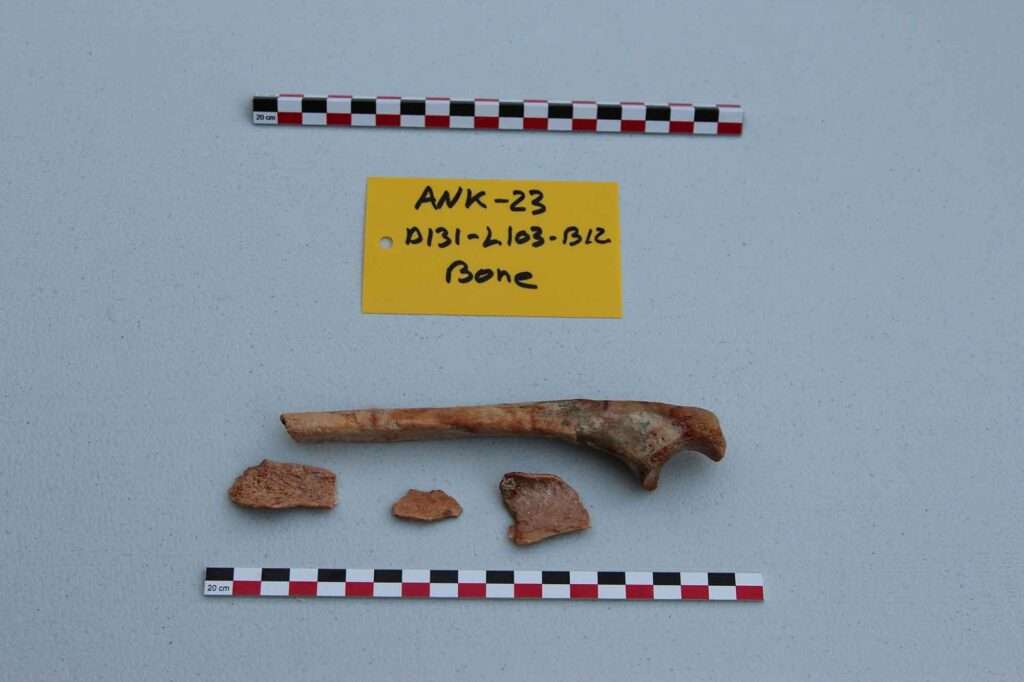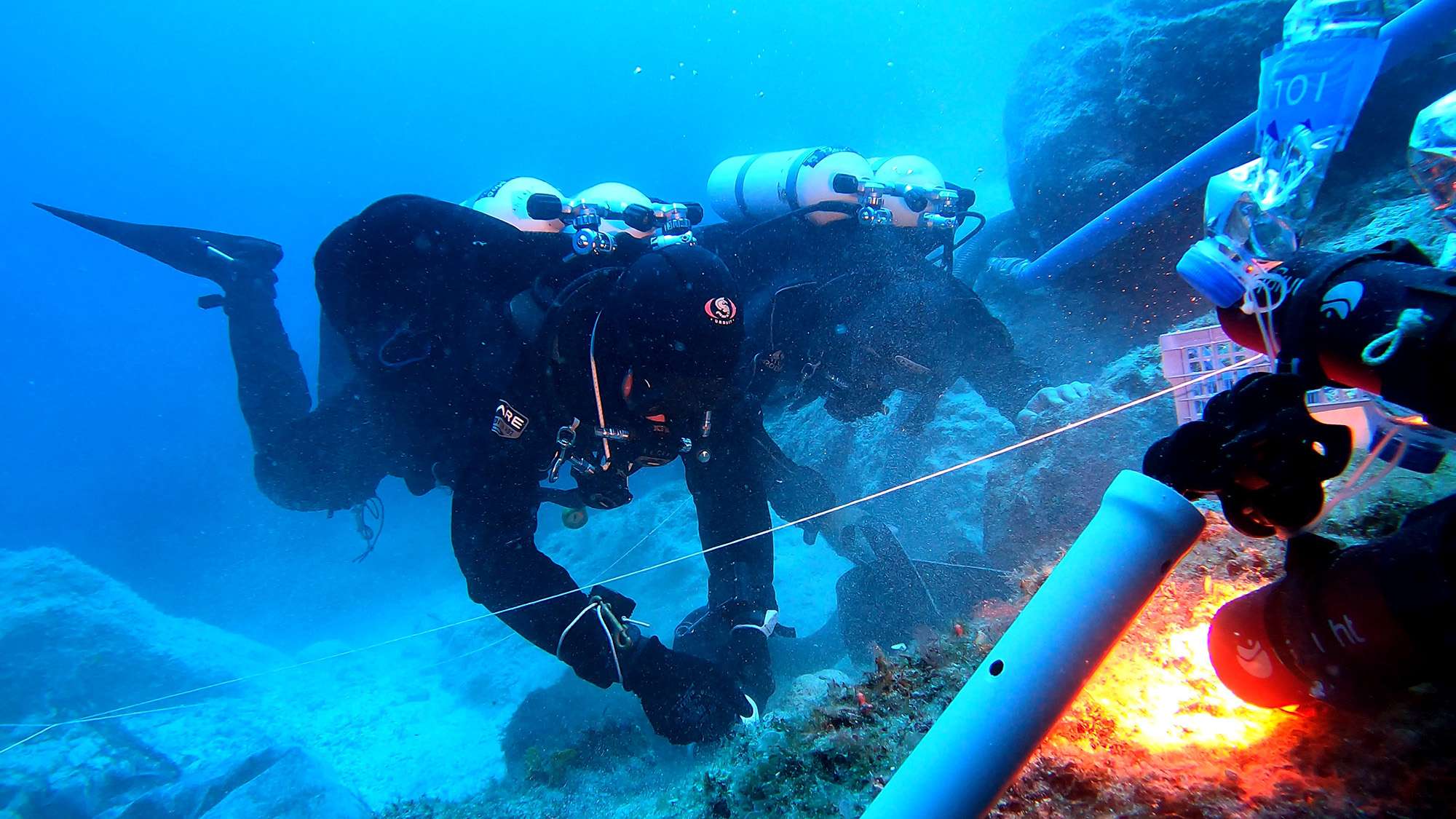Historians examining the Roman shipwreck where the Dial of Destiny from the new Indiana Jones film was found deep underwater and surrounded by skeletons have found a second ship nearby.
The shipwreck that was found in 1900 is now being examined using the latest hi-tech methods not available at the time and including an international team of archaeologists, divers, engineers and other scientists.
And in a sensational development, the team have discovered an additional vessel at the site where the Antikythera mechanism on which the Dial of Destiny was based was first found. The incredible device was centuries ahead of its time and is widely regarded as the world’s first analogue computer.
The experts have also found a skeleton from an ancient mariner previously missed by archaeologists excavating the site that was recovered alongside ceramic fragments and other objects.
The Antikythera wreck itself was discovered in Easter of 1900 when Captain Dimitrios Kondos and his crew of sponge divers sailed through the Aegean en route to fishing grounds off North Africa.
They stopped at the Greek island of Antikythera to wait for favourable winds, and while they were there, decided to do some diving off the island’s coast wearing the standard diving dress of the time – canvas suits and copper helmets.
Diver Elias Stadiatis descended to 45 metres (148 feet) depth and then quickly signalled to be pulled to the surface after finding he had landed among a heap of rotting corpses and horses strewn among the rocks on the seafloor.
Thinking the diver was drunk from the nitrogen in his breathing mix at that depth, Kondos donned diving gear and descended to the site, but then he too returned to the surface, with the arm of a bronze statue.

The crew eventually continued on their journey to the fishing grounds, but at the end of the season they returned to Antikythera and retrieved further artifacts from the wreck.
Among the coins and statues dating back to the fourth century BC, there were also the severely corroded remnants of a device which many regard as the world’s oldest known analogue computer, the Antikythera mechanism.
But now this ancient history has taken a new twist with the discovery of a second smaller vessel that was presumably already on the seabed when it was joined by the larger vessel.
The newly found boat – reportedly from the Byzantine era – was found after researchers from Switzerland and Greece discovered several fragments of ceramics at the Antikythera site.
in a statement, the Swiss School of Archaeology in Greece said: “Several fragments of late ceramics have been unearthed, indicating that another, probably much smaller, vessel suffered the same tragic fate in proto-Byzantine times.”
The study this is being carried out now is due to finish in 2025 and is being led by the Head of the Ephorate of Antiquities of Piraeus and the Islands, Dr Angeliki G. Simosi, and archaeology professor at the University of Geneva Lorenz Baumer and they are using remote-controlled drones and digital capture alongside divers to search the site.

The data gathered daily is then integrated using 3D modelling which enabled the site to be remarkably visualised, in addition to documenting and integrating the finds into a Geographic Information System (GIS), for further analysis.
The new excavations focused on the area at the eastern edge of the shipwreck site where they also unearthed the bone remains of at least one other individual believed to have fallen victim from the shipwreck.
In addition to the second wreck, divers and scientists also discovered pieces of marble statues, pottery, glassware and copper alloy, lead and wooden elements of the ship’s structure.
And one of the marble fragments – according to the researchers – belonged to the beard of the head of Herakles – the Greek name for Hercules – previously discovered in 2022.

The University of Geneva, whose professor of archaeology Lorenz Baumer led the study, said: “These finds confirm the cultural and artistic importance of the Antikythera wreck.
“This new information opens up exciting perspectives on the maritime history of the region and underlines the importance of continuing archaeological research in this area.”
“The overall aim of these excavations is to understand better the circumstances surrounding the sinking by closely examining the wreck’s preservation and positioning, its possible route and its cargo.
“This season’s discoveries are essential to formulating a global vision of this tragic historical event.”
To find out more about the author, editor or agency that supplied this story – please click below.
Story By: Georgina Jadikovska, Sub-Editor: Marija Stojkoska, Agency: Newsflash
The Ananova page is created by and dedicated to professional, independent freelance journalists. It is a place for us to showcase our work. When our news is sold to our media partners, we will include the link here.




